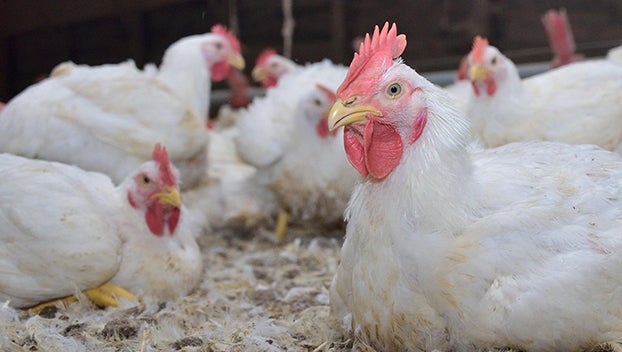HPAI affects more birds in Copiah County, egg prices continue decline
Published 4:27 pm Monday, February 27, 2023

- (Photo by MSU Extension Service/Kevin Hudson)
BROOKHAVEN — US Department of Agriculture’s February forecast and outlook of Poultry, Dairy and Livestock markets shows production of eggs is down due to Highly Pathogenic Avian Influenza outbreaks. Producers are starting to rebuild flocks which will lead to an increase in egg production.
Copiah County had the most recent outbreak in Mississippi. USDA’s Animal and Plant Health Inspection Service reports 50 birds are affected by HPAI in Copiah County. The USDA does not release any further identifying information such as location or which chicken producer is impacted.
Copiah’s positive detection has seen an increase of 20 birds affected by HPAI since the outbreak was first reported last week. US poultry flocks have seen 58.52 million birds affected by HPAI. A poultry producer in Leake County had 89,000 birds affected by the disease early this month which was the third outbreak of HPAI in Mississippi poultry.
Trending
Egg prices starting to fall
Wholesale prices dropped considerably in January. Eggs were $2.12 less a dozen in January to be at an average price of $3.78 per dozen, nearly a quarter of the price of eggs in December. USDA reports the prices were still 162 percent higher than egg prices in January 2021.
Prices are forecast to drop going into March but might increase around Easter due to the holiday demands for baking. Average egg prices in 2023 are forecast to drop to $2.07 a dozen.
HPAI impacts the supply
USDA reports egg production has suffered with about 40 million egg laying hens killed by HPAI in 2022. Egg production totaled 7,719 million dozen eggs in 2022 which was 3.2 percent lower than production in 2021.
January’s egg laying flock size was estimated to be 306.3 million layers nationwide which is more than 3 million egg layers down from those in December 2022. HPAI accounted for the deaths of 3.9 million egg laying hens in December. USDA reported on January 1 there were 81.7 eggs per 100 layers per day which was a slowdown in production.
Trending
However, the number of pullets, future egg layers, added to flocks totaled a little over 125 million which is higher than previous January’s. Pullets will take 18 to 20 weeks to become productive and start laying eggs. USDA forecasts 2023 to have 8,095 million dozen eggs which would be a 4.9 percent increase from this past year.





